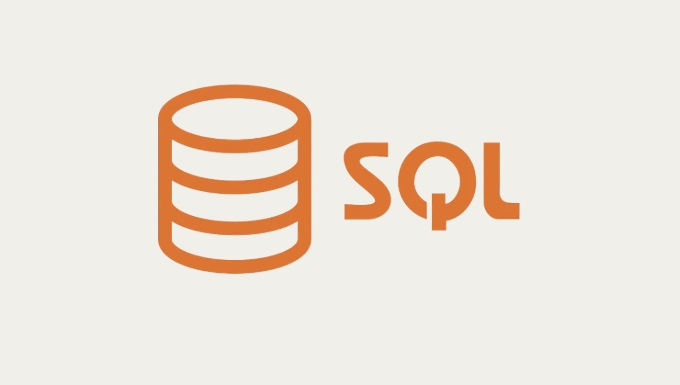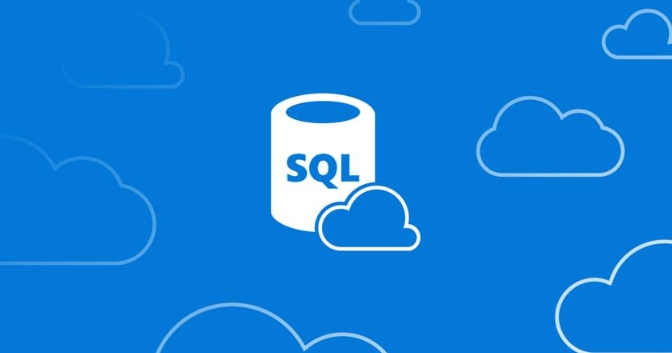What is the difference between a clustered and a non-clustered index in SQL?
Jul 04, 2025 am 03:03 AMClustered and non-clustered indexes differ in data organization and usage. 1. Clustered indexes define the physical order of data storage, allowing only one per table, ideal for range queries. 2. Non-clustered indexes create a separate structure with pointers to data rows, enabling multiple indexes per table, suited for exact-match lookups. 3. Clustered indexes offer faster range retrievals, while non-clustered indexes speed up searches on specific values. 4. Updates on clustered index keys can be costly due to row movement. 5. Choose clustered indexes for sorting and range-based access, and non-clustered indexes for frequent unique searches, avoiding excessive indexing to prevent performance degradation on inserts and updates.

When it comes to working with databases in SQL, indexes are crucial for speeding up data retrieval. Two of the most common types you’ll run into are clustered and non-clustered indexes. The main difference between them lies in how they organize and store data.

Let’s break it down in a way that makes sense for everyday use.

Clustered Index Determines Physical Data Order
A clustered index defines the actual order in which data is stored in a table. Think of it like a phone book — entries are sorted alphabetically by last name. When you create a clustered index on a column (like an ID or Date), the database physically rearranges the rows in the table based on that column’s values.
- This means there can only be one clustered index per table — because the data rows themselves can only be sorted one way.
- Queries that retrieve large ranges of data (e.g., "get all users created between January 1st and March 31st") benefit greatly from a clustered index on the date column.
- Primary keys often have a clustered index by default, unless specified otherwise.
So if your queries often access data in a specific order or range, a clustered index on that column can make those lookups much faster.

Non-Clustered Index Works Like a Book Index
A non-clustered index doesn’t change the physical order of the data. Instead, it creates a separate structure that contains a copy of the indexed columns along with a reference (a pointer) back to the actual data row.
- You can have multiple non-clustered indexes on a single table.
- They’re great for exact-match lookups — like searching for a user by email address.
- Since they’re separate from the actual table data, they add some overhead in terms of storage and maintenance, especially when data changes frequently.
For example, if you have a non-clustered index on the Email column, the database builds a sorted list of emails with pointers to where each full record lives. It uses this list to quickly find the matching rows without scanning the whole table.
Key Differences at a Glance
Here's a quick comparison:
- Storage: Clustered indexes affect how data is stored; non-clustered indexes don't.
- Quantity: A table can have only one clustered index but many non-clustered indexes.
- Performance: Clustered indexes are usually faster for reading large ranges; non-clustered indexes help speed up searches on specific values.
- Updates: Updating a clustered index key can be expensive since it might require moving the entire row to a new location.
How to Choose Between Them
It really depends on how your data is used:
- Use a clustered index on columns that are often used for sorting or range-based queries.
- Add non-clustered indexes on columns used for frequent searches, especially unique ones like usernames or emails.
- Be careful not to overdo it — too many indexes can slow down insertions and updates.
In general, start with a clustered index on your primary key, then add non-clustered indexes as needed based on query patterns.
That’s basically it. Understanding when and how to use each type can save you a lot of time and improve performance without needing complex optimizations.
The above is the detailed content of What is the difference between a clustered and a non-clustered index in SQL?. For more information, please follow other related articles on the PHP Chinese website!

Hot AI Tools

Undress AI Tool
Undress images for free

Undresser.AI Undress
AI-powered app for creating realistic nude photos

AI Clothes Remover
Online AI tool for removing clothes from photos.

Clothoff.io
AI clothes remover

Video Face Swap
Swap faces in any video effortlessly with our completely free AI face swap tool!

Hot Article

Hot Tools

Notepad++7.3.1
Easy-to-use and free code editor

SublimeText3 Chinese version
Chinese version, very easy to use

Zend Studio 13.0.1
Powerful PHP integrated development environment

Dreamweaver CS6
Visual web development tools

SublimeText3 Mac version
God-level code editing software (SublimeText3)
 The Purpose of SQL: Interacting with MySQL Databases
Apr 18, 2025 am 12:12 AM
The Purpose of SQL: Interacting with MySQL Databases
Apr 18, 2025 am 12:12 AM
SQL is used to interact with MySQL database to realize data addition, deletion, modification, inspection and database design. 1) SQL performs data operations through SELECT, INSERT, UPDATE, DELETE statements; 2) Use CREATE, ALTER, DROP statements for database design and management; 3) Complex queries and data analysis are implemented through SQL to improve business decision-making efficiency.
 SQL: The Language, MySQL: The Database Management System
Apr 21, 2025 am 12:05 AM
SQL: The Language, MySQL: The Database Management System
Apr 21, 2025 am 12:05 AM
The relationship between SQL and MySQL is: SQL is a language used to manage and operate databases, while MySQL is a database management system that supports SQL. 1.SQL allows CRUD operations and advanced queries of data. 2.MySQL provides indexing, transactions and locking mechanisms to improve performance and security. 3. Optimizing MySQL performance requires attention to query optimization, database design and monitoring and maintenance.
 MySQL: A Practical Application of SQL
May 08, 2025 am 12:12 AM
MySQL: A Practical Application of SQL
May 08, 2025 am 12:12 AM
MySQL is popular because of its excellent performance and ease of use and maintenance. 1. Create database and tables: Use the CREATEDATABASE and CREATETABLE commands. 2. Insert and query data: operate data through INSERTINTO and SELECT statements. 3. Optimize query: Use indexes and EXPLAIN statements to improve performance.
 SQL vs. MySQL: Clarifying the Relationship Between the Two
Apr 24, 2025 am 12:02 AM
SQL vs. MySQL: Clarifying the Relationship Between the Two
Apr 24, 2025 am 12:02 AM
SQL is a standard language for managing relational databases, while MySQL is a database management system that uses SQL. SQL defines ways to interact with a database, including CRUD operations, while MySQL implements the SQL standard and provides additional features such as stored procedures and triggers.
 SQL and MySQL: Understanding the Relationship
Apr 16, 2025 am 12:14 AM
SQL and MySQL: Understanding the Relationship
Apr 16, 2025 am 12:14 AM
The relationship between SQL and MySQL is the relationship between standard languages ??and specific implementations. 1.SQL is a standard language used to manage and operate relational databases, allowing data addition, deletion, modification and query. 2.MySQL is a specific database management system that uses SQL as its operating language and provides efficient data storage and management.
 Comparing SQL and MySQL: Syntax and Features
May 07, 2025 am 12:11 AM
Comparing SQL and MySQL: Syntax and Features
May 07, 2025 am 12:11 AM
The difference and connection between SQL and MySQL are as follows: 1.SQL is a standard language used to manage relational databases, and MySQL is a database management system based on SQL. 2.SQL provides basic CRUD operations, and MySQL adds stored procedures, triggers and other functions on this basis. 3. SQL syntax standardization, MySQL has been improved in some places, such as LIMIT used to limit the number of returned rows. 4. In the usage example, the query syntax of SQL and MySQL is slightly different, and the JOIN and GROUPBY of MySQL are more intuitive. 5. Common errors include syntax errors and performance issues. MySQL's EXPLAIN command can be used for debugging and optimizing queries.
 SQL in Action: Real-World Examples and Use Cases
Apr 18, 2025 am 12:13 AM
SQL in Action: Real-World Examples and Use Cases
Apr 18, 2025 am 12:13 AM
In practical applications, SQL is mainly used for data query and analysis, data integration and reporting, data cleaning and preprocessing, advanced usage and optimization, as well as handling complex queries and avoiding common errors. 1) Data query and analysis can be used to find the most sales product; 2) Data integration and reporting generate customer purchase reports through JOIN operations; 3) Data cleaning and preprocessing can delete abnormal age records; 4) Advanced usage and optimization include using window functions and creating indexes; 5) CTE and JOIN can be used to handle complex queries to avoid common errors such as SQL injection.
 Getting Started with SQL: Essential Concepts and Skills
Apr 22, 2025 am 12:01 AM
Getting Started with SQL: Essential Concepts and Skills
Apr 22, 2025 am 12:01 AM
SQL is a language used to manage and operate relational databases. 1. Create a table: Use CREATETABLE statements, such as CREATETABLEusers(idINTPRIMARYKEY, nameVARCHAR(100), emailVARCHAR(100)); 2. Insert, update, and delete data: Use INSERTINTO, UPDATE, DELETE statements, such as INSERTINTOusers(id, name, email)VALUES(1,'JohnDoe','john@example.com'); 3. Query data: Use SELECT statements, such as SELEC






